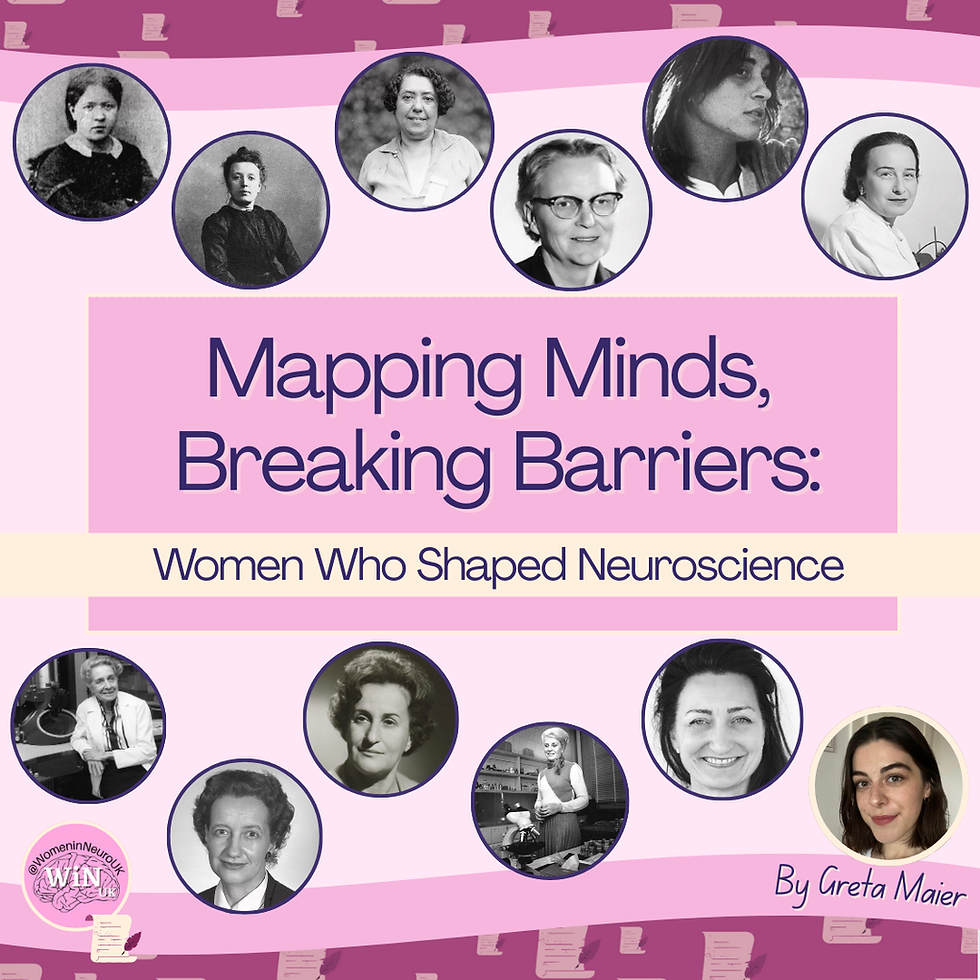Combining AI and neuroscience to detect and predict neurological disorders
- Rebecca Parker
- Apr 6, 2023
- 3 min read
Technology use within neuroscience is constantly changing – can scientists now use artificial intelligence to predict neurological disorders?
There is a strong relationship between Artificial Intelligence (AI) and neuroscience: Both disciplines are concerned with the study of the brain and nervous system, and both aim to understand how these systems work. Neuroscience studies the biological structure and function of the nervous system, including the brain, while AI is a field of computer science focused on creating intelligent machines that perform tasks mimicking human intelligence, such as problem solving and language recognition.
How are Neuroscience and AI related?
The biological neural network is a complex circuit of neurons allowing for electrical signalling. Researchers in AI have used this base idea, building upon existing network architectures to develop artificial neural networks, which have been able to advance computer-based learning and allow for adaptive control, as well as self-learning. These two concepts are a baseline within AI, referring to the capability of a system to modify its own operation to achieve the best possible solutions, as well as being able to learn new patterns independently. Other applications from human learning can also be used in the continuing development of AI. For example, reinforcement learning has been a key focus, with scientists developing AI algorithms capable of self-learning complex notions and strategies.
Researchers in neuroscience also benefit from this relationship. Advancements within neuroimaging and AI learning interfaces allow for earlier predictions in neurological disorders, as well as the ability to use AI to aid with general medical concerns. In China, this is demonstrated by their AI system ”ping a good doctor”, which can operate both online and within “one minute clinics” , containing booths that can also dispense general medication.
What are some real-world applications?
Using reinforcement learning, researchers have developed AI-based simulations that are able to interface with and extract brain signals and commands. Using a specially made device, i.e., a robot arm, brain signals can be fed into and analysed by the device, converting them into commands for the arm to carry out. This has been seen with robot arms which have been used to aid muscle paralysis and robot-based surgery and may provide useful to those affected by neuromuscular disorders such as spinal cord injuries and ALS.
Moreover, neuroimaging is a crucial part of neuroscience. To understand, diagnose, and treat different conditions, scientists use various forms of neuroimaging to visualise the problem. Artificial neural networks can extract features from complex data, remove noise and contrast from scans, and speed up imaging, commonly used for increasing the speed of MRI data acquisition. Alongside, AI also aids with improving the resolution of the resulting images. This application would reduce the workload of radiologists and could potentially improve waiting times.
How does AI help in the diagnosis of neurological disorders?
Due to the nature of most neurological diseases, early diagnosis can be a difficult hurdle as symptoms typically surface after the loss of a substantial number of neurons. Researchers within AI have studied machine learning algorithms associated with MRI and discovered that these learning models were able to distinguish between patients with AD and healthy patients at a much earlier stage. Additionally, motor dysfunction diseases such as Parkinson’s disease can typically be diagnosed from a simple motor task such as drawing; another research group used this to develop a machine-based algorithm allowing for early disease diagnosis.
The methods used by AI are often non-invasive and quick. Smart algorithms can detect, diagnose, and suggest treatment for certain disorders in a fraction of the time a human can. This set-up could aid physicians with life-changing decision making, allowing them to be faster and more informed.
What can we draw from this?
In recent years, the development of machine learning has increased exponentially. There is a strong foundation for neuroscience and AI working together to efficiently diagnose and treat neurological disorders, however many challenges exist. Scientists emphasise the need for a multidisciplinary approach, where neuroscientists work side by side with technology to create a network of shared information.
Photo by h heyerlein on Unsplash.
This article was written by Rebecca Parker and edited by Julia Dabrowska. Interested in writing for WiN UK yourself? Contact us through the blog page and the editors will be in touch!




Comments